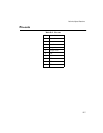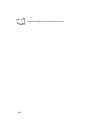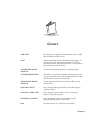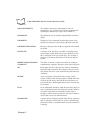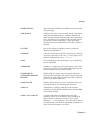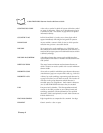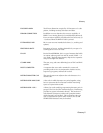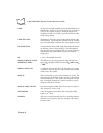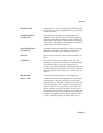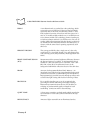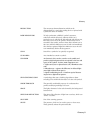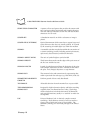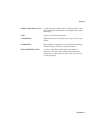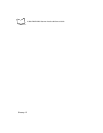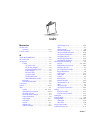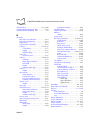
Glossary-7
Glossary
NOMINAL SIZE Standard size for a bar code symbol. Most UPC/EAN codes
can be used over a range of magnifications (e.g., from 0.80
to 2.00 of nominal).
NUMBER SYSTEM
CHARACTER
In the UPC/EAN code used in a retail application, the
mandatory, first encoded character, after the left guard bars.
The corresponding human readable character identifies the
coded character and appears at the bottom left-hand margin
of the symbol. The assigned system number corresponds to
a usage category for the bar coded item.
ONE-DIMENSIONAL
SYMBOLOGY
Symbologies which encode data only in a linear or horizontal
dimension (X-dimension); the symbol’s vertical height (Y-
dimension) is redundant (e.g., UPC/EAN, Code 39).
OPACITY The capacity for material to interfere with transmission of
light.
OVERHEAD The number of characters required for start, stop, and
checking for a given symbol (in PDF417, also left and right
row indicators and error correction codewords). For
example, a one-dimensional symbol requiring start/stop and
two check characters contains four characters of overhead.
Thus, to encode three data characters, seven characters are
required.
PARAMETER A variable that can have different values assigned to it.
PARITY TYPE A parity check bit is the most significant bit of each ASCII
coded character. The parity should be set to help detect
transmission errors. The parity should be set to match that
of the receiving device. If even parity is selected, the parity
bit has a value (0 or 1) to ensure that an even number of 1
bits are contained in the coded character. If odd parity is
selected, the parity bit will have a value (0 or 1) to ensure that
an odd number of 1 bits are contained in the coded character.
If 0 parity is selected, the parity bit always will be set to 0. If
1 parity is selected, the parity bit always will be set to 1.



